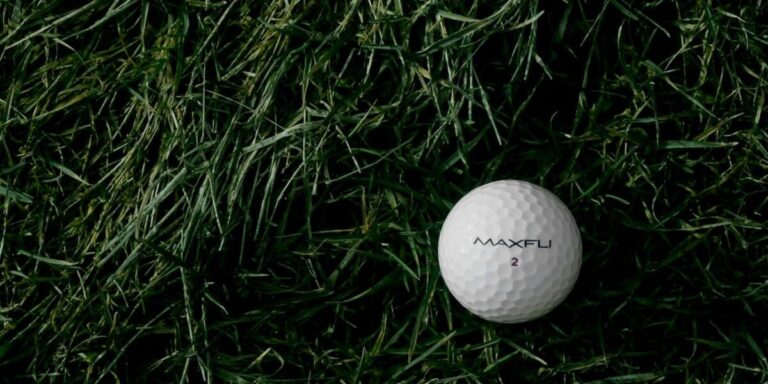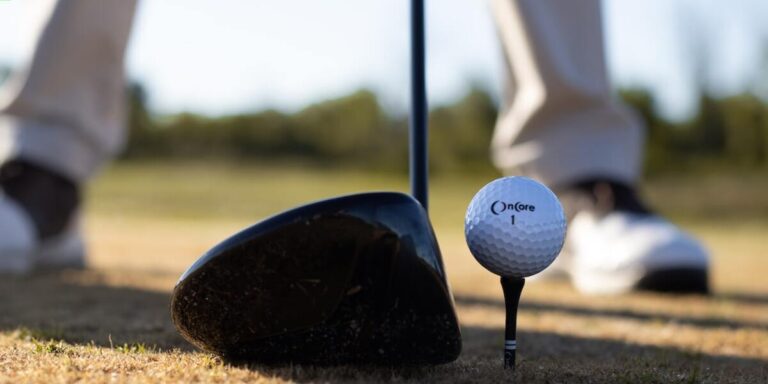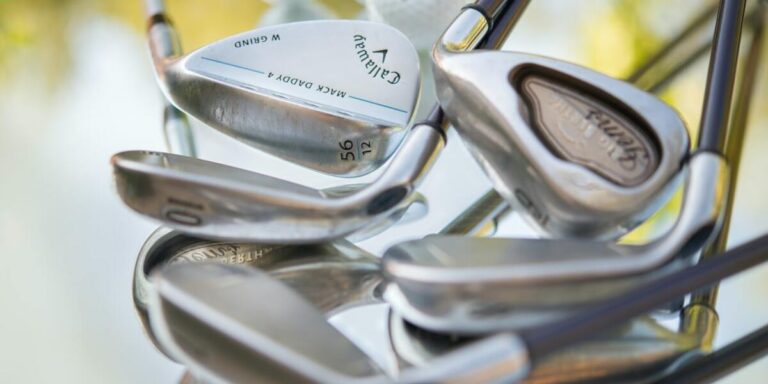When did the 1.62 golf ball become illegal?
The 1.62 golf ball became illegal on January 1, 2013. The USGA (United States Golf Association) and the R&A (Royal & Ancient) had been working together to try to standardize the diameter of the golf ball since 1930. In 2002, they finally decided on a minimum size of 1.68 inches and a maximum size of 1.72 inches. This meant that the 1.62 golf ball was now illegal because it was below the minimum size limit set by the two organizations.”
The History of the 62 Golf Ball
The game of golf has been around for centuries, and the golf ball is one of the most essential pieces of equipment. The diameter of a golf ball has changed over time, as technology and manufacturing techniques have improved. Today, most golf balls are about 1.68 inches in diameter. But it wasn’t always this way…
In the early days of golf, the size and shape of the ball was not standardized. This made it difficult for players to consistently hit the ball well. In 1848, gutta-percha balls were introduced. These balls were much easier to hit than their predecessors, and they quickly became popular with players. The Gutty Balls, as they were called, were typically about 1.62 inches in diameter.
With the development of balata coverings in 1916 came another increase in golf ball performance – and another increase in diameter! Balata balls could be compressed more than Gutty Balls without cracking or breaking; this allowed manufacturers to make them smaller and lighter while still maintaining their round shape during flight . As a result ,Balata covered balls typically had a diameter between 1 .64and1 .67 inches By 1950s two-piece construction processes helped Golf Ball Diameter reach its current standard size
Why Was the 62 Golf Ball Banned?
1. Everyone knows that the smaller the golf ball, the easier it is to hit straight and long. That’s why many amateurs play with a smaller ball, such as a child’s toy ball or a beach ball. So when the USGA reduced the size of the legal golf ball from 1.62 inches in diameter to 1.68 inches in 1990, it was done with good intentions. The hope was that by making the balls larger, they would go shorter distances and be harder to control.
2 Unfortunately, what actually happened was quite opposite from what was intended.. Instead of going shorter distances, tee shots went noticeably longer- sometimes 10 yards or more! And since accuracy didn’t seem to be affected one way or another by this change in dimensions, there wasn’t much downside for players who chose to use them.. As you can imagine, manufacturers quickly began producing these “hotter” 62 balls en masse and soon they became extremely popular on tour
3 In response to all this commotion (and undoubtedly pressure from worried sponsors) ,the USGA eventually reversed their decision and re-legalized the old 1.62 inch balls in 1997 . But by then it was too late.. The genie was out of the bottle and modern golfers had been introduced to a whole new world of distance potential!
How Did the Illegalization of the 62 Golf Ball Affect Players?
1. The illegalization of the 62 golf ball affected players in a number of ways. Primarily, it limited their ability to hit the ball as far as they could previously. With the smaller ball, players were forced to make adjustments in their swing and equipment in order to compensate for the loss of distance. Additionally, the change made it more difficult for players to control their shots, particularly on approach and around the green. Overall, the illegalization of the 62 golf ball had a significant impact on player performance.
2. While some may argue that the illegalization of the 62 golf ball was necessary in order to level the playing field among all golfers, others maintain that it did nothing but harm those who relied on hitting long drives to succeed. Regardless of which side you fall on, there’s no denying that this change had a major impact on how competitive rounds of golf would be played from here on out. For better or worse, shorter holes and greater precision would now be required in order to come out victorious more often than not.
3) All things considered, what effect did making longer drives harder have on professional Golfer? Well first let’s consider how they make money; advertisements , sponsorships ,and prize money . If we look at any one variable its safe too say less people are watching when drive length drops because “longer” has been proven over time too sell . So while theoretically Gore-Tex jackets should have increased sales due too harsher winter conditions , Uniqlo actually lost market share . Why? Because people don’t like buying coat thats going keep them dry during a rainstorm if its also going force them inside when its -30C outside . Just like Pro Golfers need spectators too generate income so do regular folk
What Other Changes in Diameter Have There Been for Golf Balls?
It is interesting to note that the diameter of a golf ball has not always been standardized. In fact, for many years there was no uniform size for golf balls, which led to some difficulties when it came to playing the game. It wasn’t until 1898 that the United States Golf Association (USGA) finally decided on a standard size for all golf balls: 1.68 inches in diameter.
Since then, there have been very few changes made to the official diameter of a golf ball. The only notable change occurred in 1902, when the USGA decreased the size by 0.04 inches in an effort to reduce how far the ball could be hit. However, this change was met with much resistance from players and eventually reversed just two years later.
So overall, there hasn’t been much variation in terms of the actual diameter of a golf ball since 1898. But that doesn’t mean that manufacturers haven’t experimented with different sizes over the years! In fact, plenty of companies have released “non-standard” sized balls claiming that they provide extra distance or accuracy benefits over traditional sized balls. While these claims are often unsubstantiated, it’s still fun to see what new innovations are being developed in the world of golf!
Are There Any Downsides to a Larger Diameter Golf Ball?
Are there any downsides to a larger diameter golf ball? This is a question that often comes up among golfers. While it is true that a larger ball will fly further and be more forgiving on miss-hits, there are also some potential drawbacks to consider.
First, a larger ball can be more difficult to control. If you are used to playing with a smaller ball, you may find it harder to keep the bigger one straight. Also, because the sweet spot on a large ball is smaller relative to its size, you may have less margin for error when hitting shots.
Second, large balls tend to cost more than small ones. So if you’re looking to save money on your golf game, sticking with standard sized balls might be the way to go.
Finally, some courses have restrictions on the size of ball that can be played. So before making the switch to oversized balls, make sure your local course doesn’t have any such rules in place.
What Is the USGA’s Stance ontheIllegalized 1,62 golf ball ?
The United States Golf Association (USGA) is the governing body for golf in the U.S. and sets the rules for the game. Part of their mission is to ensure that golf is kept fair and enjoyable for all players.
One way they do this is by setting limits on the size and weight of golf balls that can be used in competition. The current limit for diameter is 1.68 inches, with a tolerance of +/- 0.01 inch. In other words, any ball that measures 1.67 inches or less in diameter would be considered illegal under USGA rules .
So why would someone want to use an illegalized ball? Well, it turns out that smaller balls fly further than larger ones . So if you’re looking to get an extra few yards off the tee, using a smaller ball might seem like a good idea .
But beware! Not only are you risking disqualification from your next tournament if you get caught , but you could also end up doing some serious damage to your clubs . Hitting a smaller ball with a club designed for a larger one puts stress on the materials and can cause them to break or shatter unexpectedly .
In short: Don’t risk it! Play by the rules and enjoy your round of golf – even if it means sacrificing those extra few yards…
Frequently Asked Question
-
When did the 1.62 golf ball become illegal?
-
Are golf holes all the same size?
-
What is a legal golf ball?
-
What’s the difference between 2 piece and 3 piece golf balls?
-
How many cm diameter is a golf ball?
-
Are some golf balls bigger than others?
-
What is the radius of a standard golf ball?
-
Are golf balls smaller in Europe?
-
Are golf balls all the same?
-
Why are golf balls not smooth?
-
Are British golf balls smaller?
-
What is the difference between 2 3 and 4 piece golf balls?
-
Are all golf balls the same diameter?
-
Do smaller golf balls go further?
-
Why is golf hole 4.25 inches?
The USGA, which had been against the 1.62 rule from the beginning, finally acted. They introduced a new, smaller diameter minimum of 1.68 inches in 1929 to counter the R&A ruling.
Quick Answer: A standard golf hole size is a circular with a diameter of 4.25 all around. This size is universal for all golf holes, and it is the size that all courses around the globe follow.
The legal golf ball must not be less than 1.68 inches. Polara balls are 1.68 inches in diameter, which is the same as regular. A smaller ball will have more drag, which should result in greater distance. Illegal balls tend to be slightly heavier.
Two-piece golf balls will generally produce greater distance and are more affordable than three-piece golf balls. Three-piece golf balls will be more costly, produce more spin and generate more distance for those who have faster swing speeds.
In centimeters, the golf ball’s size is 42.67 cm (4.268 cm). This standard refers to playing equipment. Every golf ball must be at least 1.680 inches in order to qualify for tournament play.
Golf balls that are slightly larger than standard are called oversized. The USGA and R&A do not specify a maximum size for golf balls. Instead, they focus on the minimum size players should adhere to.
In inches, the size of a golfball is: Diameter: 68 Circumference = 27 Radius:84
Two sizes of golf balls were in common use all over the globe. A slightly smaller version was available to be used in R&A-governed areas. The Rules of Golf did not specify the minimum size of golf balls until 1990. The size that was agreed upon in 1990 is still valid today.
What are the differences between golf ball brands? Each major brand offers three to four types of golf balls. All are designed to conform to the agreed standards of golf associations. A golf ball should weigh no more than 1.620 ounces, and have a diameter of no less than 1.580 inches.
A golf ball with dimples creates a turbulent layer of air around the surface. The smooth flowing air can follow the surface of the golf ball a bit further around its backside, decreasing the volume of the wake.
Two versions were eventually standardized: The smaller British ball couldn’t be larger than 1.62in diameter and couldn’t weigh more that 1.62ozs. While the bigger American ball was limited to 1.68in diameter and 1.62oz, it could be no less than 1.68 in.
A 3 piece ball will suit low- to middle handicappers who prefer a soft feeling golf ball, but still want to have more spin. For players who swing faster than 105 MPH and want to spin more, 4-piece balls will work best. A 3 piece ball is more popular in most cases.
How big is a standard golf ball? Today’s standard golf ball size is 1.68 inches. It is not legal to use in tournament play or be sold in shops. Today’s standard golf ball size is 1.68 inches. However, before the nineteen-eighties, it was 1.62 inches.
Golf Ball Size. According to USGA Rules of Golf the maximum diameter of the golf ball must not exceed 1.680 inches (42.6 mm). If the ball’s weight is equal, a smaller one will fly farther than a bigger one. This is because a smaller ball will fly further than a larger one given the same weight.
R&A HAS AN ABOVED 4.25-INCH SIZE HOLE SIZE The first hole-cutting tool used a cutter that measured, guess what, 4.25 inches. This size was liked by the R&A and they adopted it as their 1891 rules.
Conclusion
It is important to research the equipment you purchase for golf, as there are many factors that can affect your game. The size of the golf ball is just one aspect to consider, and it is important to make sure you are using a ball that conforms to the rules of the game. Thanks for reading and be sure to check out our website for more great tips and advice!






